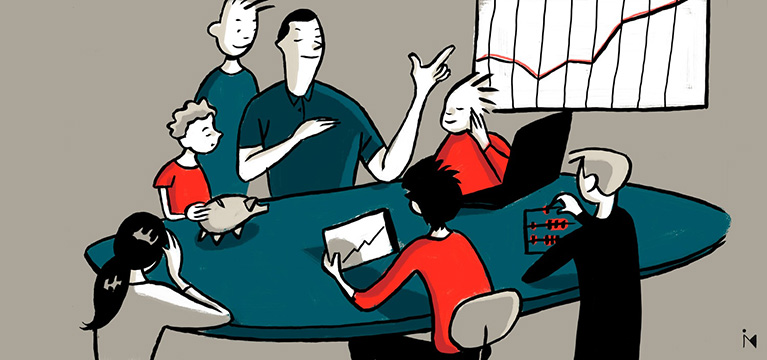I’ve always thought that if somebody had taught me how to invest and understand the value model much earlier, my gains would have been greater and I would have avoided some of the setbacks I’ve had. That’s why I think it is essential to develop a vocation for saving and long-term investment among young people who, generally speaking, receive limited financial training. That’s why I think Value School is an excellent idea that has a lot to offer us.
As part of this venture, I would like to share an investment initiative that I am developing with my children and nephews and nieces, which I have named the WatermelonCart Investment Initiative: Young Investors’ Investment Scheme.
The objective of the scheme is to familiarize my children, nephews and nieces (the investors) with savings and investment. I offer them attractive conditions to encourage them to invest and avoid the temptation to flee when they experience their first losses. I have given the initiative an English name as a marketing strategy mixed with a family story. This is how it works:
I open an account with Cobas Asset Management in my name. We choose a fund and invest in it.
My family investors initially invest at least 500 euros and at most 5,000 euros. To simplify the model and management, I have established that sums must be in 500-euro intervals.
I protect my investors against possible losses for the first three years. That way, they can recover their entire investment, even if the fund loses value.
If the fund gains value, my family investors not only retain the right to the gains their stake entitles them to, but I double them.
Example 1: If one of my investors invests 1,000 euros, but the fund loses 8% during the first year. It doesn’t matter, the investor keeps his/her 1,000 euros.
Example 2: If the investor invests 1,000 euros and the fund generates a return of 10%. Better still, as I will reward the investor with 20% of the return on the invested amount, i.e. 200 euros. Returns are calculated from the date of the initial investment.
My family investors can make as many contributions as they like, in 500-euros intervals, provided that they coincide with the date on which the fund began.
Furthermore, my young investors can choose one of the following alternatives on each anniversary:
1.- Withdraw all or part of their money and all or part of their earnings.
2.- Continue investing for another full year.
3.- Invest more money, in 500-euro intervals.
From the third year onwards, my investors assume any losses that they may incur from then onwards (whereas I assume past losses), but they continue to receive double the return.
This change in conditions forces my investors, after three years of experience, to face potential losses and take decisions to stay with the fund or abandon it. I apply the incentive of double returns to encourage them to stay.
The scheme has an initial duration of 5 years
Last Christmas, I held my first Yearly Investors’ Meeting and gave them the book “Invirtiendo a Largo Plazo” (Long Term Investments) to teach them a little bit more about the value philosophy and other values, not necessarily financial values, that also appear in the book. For example, the importance of constant learning, discipline, keeping a cool head when the going gets tough or not necessarily following common thought, to name a few.
Do I lose money as part of this scheme?
Before responding to this question, I would like to explain my background in value investment. I was a shareholder for 12 years at Bestinver at a time when Francisco García Paramés was the Head of Investments. My trust in Paco, his investment model and his discipline helped me to resist temptation to jump ship in 2009, at the peak of the crisis. And eventually, I ended up earning quite a lot. My eventual returns were of around 230%. I’ve invested through Cobas Asset Management since it was created and I have high expectations.
That’s why the response to whether I lose money is “no”. I don’t lose money, as I monitor the investments of my children and my nephews and nieces alongside my other, larger investment in the same fund. Therefore, if all goes well in the long term, and I am sure it will, my gains will amply cover any occasional losses should any of my family investors choose to give up prematurely and to pay the double returns to those who stick it out. In other words, I’ll simply earn less, but I will have taught my little investors something that I believe will really help them in the long term.
Did you find this useful?
- |







